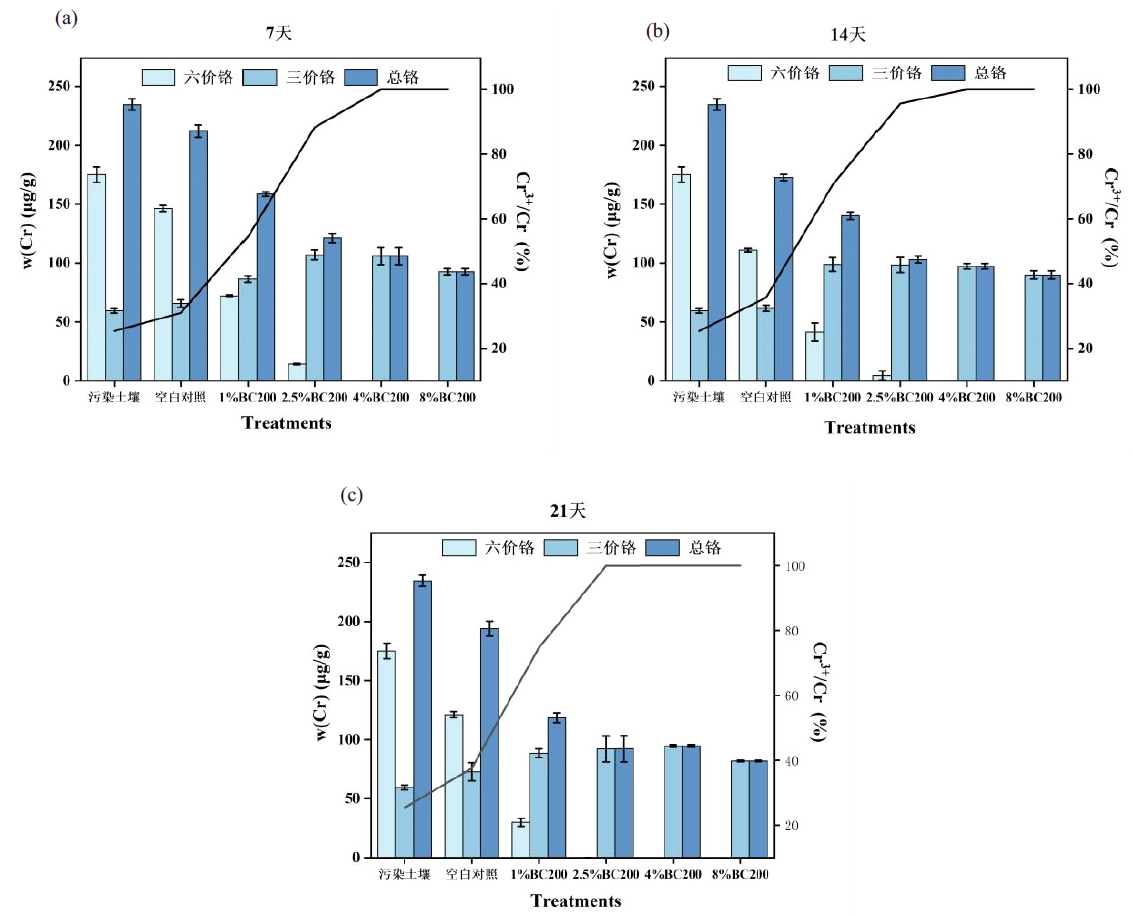
|
|
|
|
Effects of Agricultural and Forestry Biochar on Soil Heavy Metal Cr Toxicity
Chinese Agricultural Science Bulletin
2025, 41 (23):
90-100.
DOI: 10.11924/j.issn.1000-6850.casb2025-0185
This study investigated the efficacy of agricultural and forestry biochar in mitigating chromium (Cr) toxicity in artificially contaminated soil through a 40-day passivation treatment. Biochars derived from different biomass sources and pyrolysis temperatures were applied to the contaminated soil at varying ratios for pot experiments with coriander. Soil and plant samples were collected and analyzed at 0, 7, 14 and 21 days after cultivation to assess Cr immobilization and bioavailability. The results demonstrated that rice straw biochar pyrolyzed at 200°C for 4 h exhibited the highest efficiency in reducing Cr toxicity, and the effect was the best at an 8% application rate. The acid-extractable Cr content in the soil decreased by 99.8% after 7 days, while the leaching concentration of Cr (VI) dropped from an initial 175.08 μg/g to undetectable levels. Furthermore, Cr was effectively stabilized in the soil, significantly inhibiting its accumulation in the roots, stems and leaves of coriander. These findings indicated a substantial reduction in both Cr toxicity and mobility. Risk Assessment Code (RAC) analysis confirmed that the environmental risks associated with Cr contamination were markedly reduced after 7 days of treatment with 4% and 8% rice straw biochar. The study highlighted that agricultural and forestry biochar could facilitate soil remediation by converting Cr into residual and less bioavailable forms, thereby reducing soil toxicity. Additionally, this approach supports the sustainable reutilization of agricultural and forestry biomass. 
(a) 7 d;(b) 14 d;(c) 21 d
Other Images/Table from this Article
|